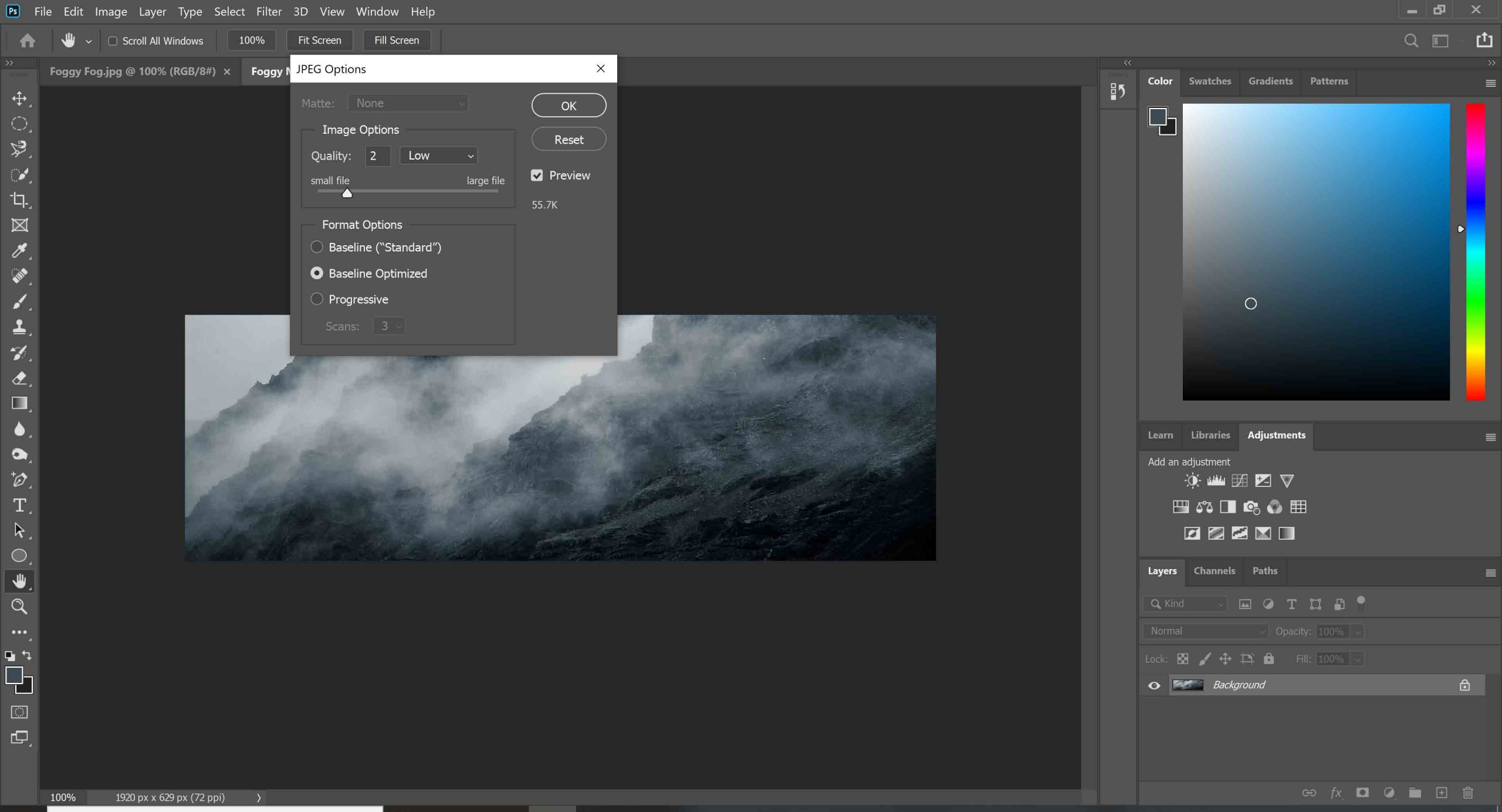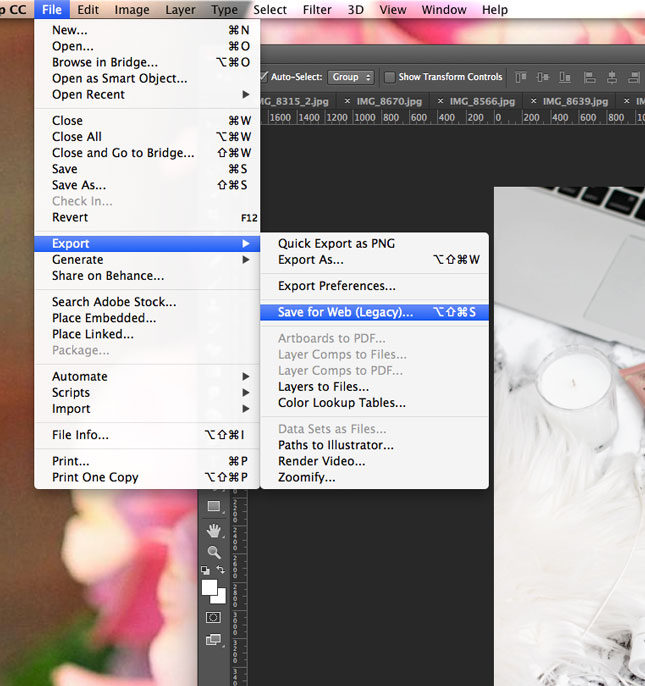
- #Optimize images for web photoshop how to
- #Optimize images for web photoshop full size
- #Optimize images for web photoshop skin
- #Optimize images for web photoshop software
- #Optimize images for web photoshop Pc
JPEG and PNG image file types are often the best for everyday web use because they deliver acceptable image clarity with an exceptionally smaller digital storage footprint. This makes them ideal for printing and large format digital applications, but less practical for standard website and SEO applications since their hefty file sizes place an unnecessary burden on browsers to load (especially on mobile). TIFF, BMP, EDS and other image files that provide higher resolutions require larger file sizes to accommodate the added visual detail. While visually large images might cramp your design and SEO style, the biggest culprit of poor image optimization is the image's file type and size.
#Optimize images for web photoshop software
You can also use 3rd party image editing software like Photoshop, Canva, and my personal favorite for fast (and even free) image edits, FotoJet.
#Optimize images for web photoshop Pc
Virtually all graphic design tools allow you to crop and resize your images as needed, including basic programs baked into most PC and Macs (i.e. Large image sizes can sometimes cause issues in visual formatting across devices and, most importantly, they can negatively impact the time it takes for your web pages to load on desktop and mobile (aka "load speed").Īs a best practice, you should always adjust the size of your images (in pixels) to match their intended use.įor example, if the width of this article's body was 780px wide on desktop, the max width of any image used in the article should be no more than 780px (the largest possible format in which this image could be viewed by website visitors). In both cases, there's one specific optimization goal: reduce the image size as much as possible without sacrificing clarity or quality. File Size - often expressed in bytes (i.e.Visual Size - often expressed in pixels (i.e.When it comes to web images, "size" refers to two basic things:
#Optimize images for web photoshop how to
Here's how to optimize images for web use, better UX and improved SERP results. The reality is that website image optimization remains a serious and pervasive issue-the exact issue the steps I've listed below are designed to address. Of the hundreds of websites I've audited over the years, poor image optimization is continually within the top 5 critical issues I see affecting a website's ability to rank, drive traffic or convert leads. I understand optimizing web images and photos likely isn't news to you, or any digital marketing professional or web designer for that matter.īut if that's the case, then why the heck do so many websites lack optimized images and photos?
#Optimize images for web photoshop skin
Many ways to skin a cat but I am used to this, been using it for years, and I don't have to think about what I am doing.Images play a massive role in your website's performance-from boosting click-through rates to increasing conversions and, as this article's title suggests, improving visibility on search engine results pages (SERPs).
#Optimize images for web photoshop full size
I use this to create full size JPEGs from my PSD files and 1800x1200 versions for use on the internet. There I can set the the file formats, sizes etc and where to put the subsequent files. Otherwise I just batch select my high res images in Bridge, go to the Menu bar > Tools > Photoshop > Image Processor. It will also turn out GIFs with transparent back grounds and so while I seldom need to make those photo reductions anymore I still pass my headers and tail credits for video through the GIF system that will sit on top of any video clip and have a clear background through which you can continue to see the video. You can set the quality level of the final image and see it much as described at the top of this post.

This will take a 10 meg image and reduce it to 1 meg or less. Now, you may still have to watch out for storage limits, storage charges, and uploading times.īack in the days of dial up (if anyone can even remember that far back) we had to size our images to the exact size they were to appear on the website, then "optimize" them using Photoshop's now termed Legacy (File > Export > Save for Web (Legacy).


It then caches the results for future use. Google PageSpeed module resizes, compresses and selects a format all based on information supplied by the browsers visiting your site. That can be far more important on slow or poor internet connections than a 10k larger file.Īlso, talk with your web designer, it's possible that compressing your images will do little to affect your site speed. The progressive setting will allow your images to download in stages. The Optimized setting will save you around 10k, a trivial amount on today internet. This is likely to reduce the file size more than compression.Īlso, skip the Optimized setting in favor of the progressive setting. There is no reason to compress a 3000x2000 image when the site calls for an 1800x1200 image. If you are going to do this for the web, your first step should be to resize the images to that needed for the site.


 0 kommentar(er)
0 kommentar(er)
